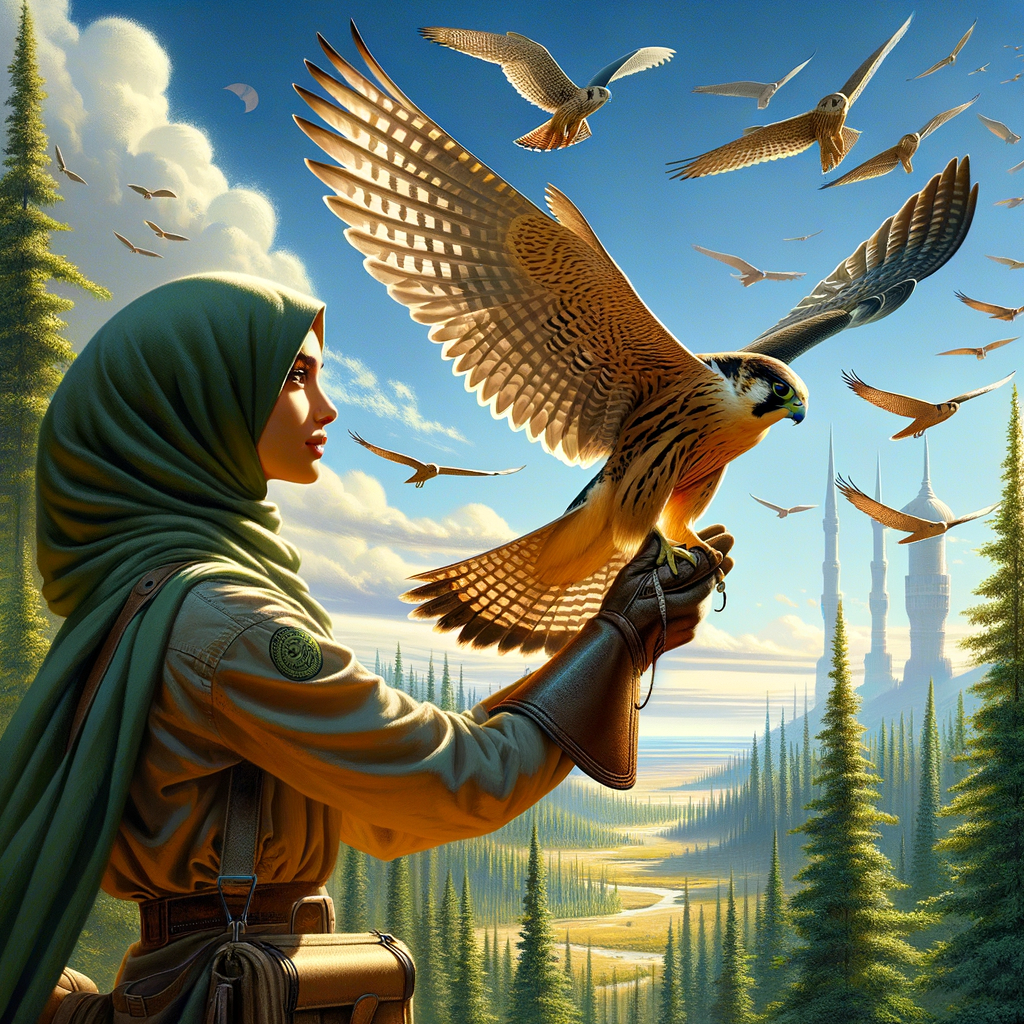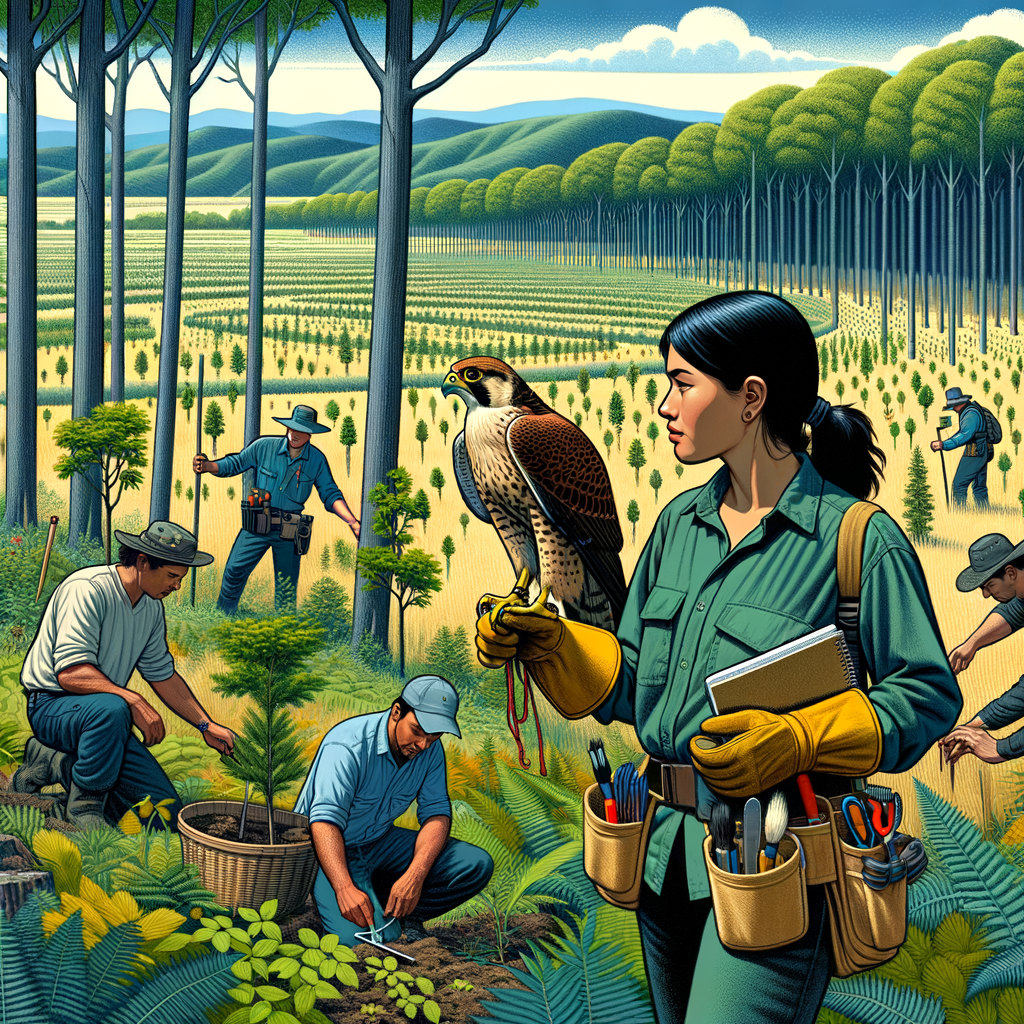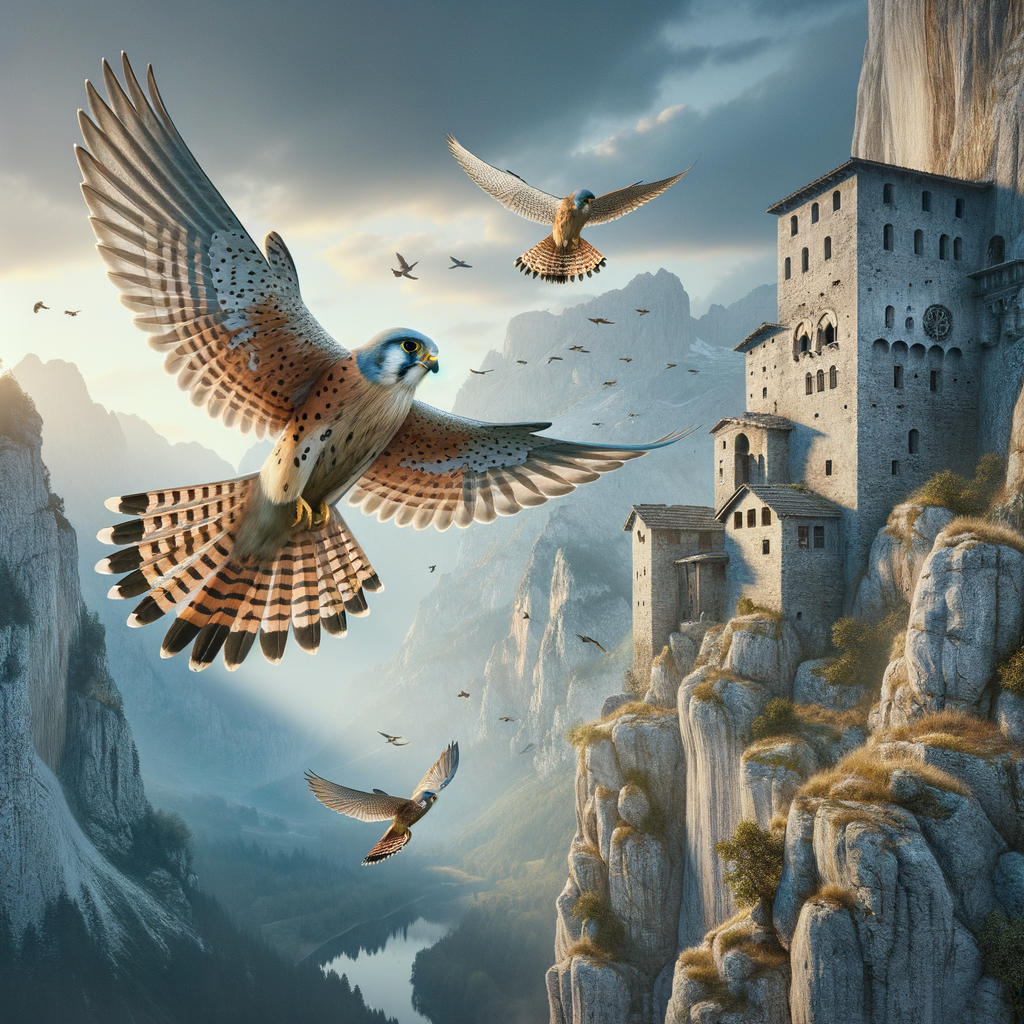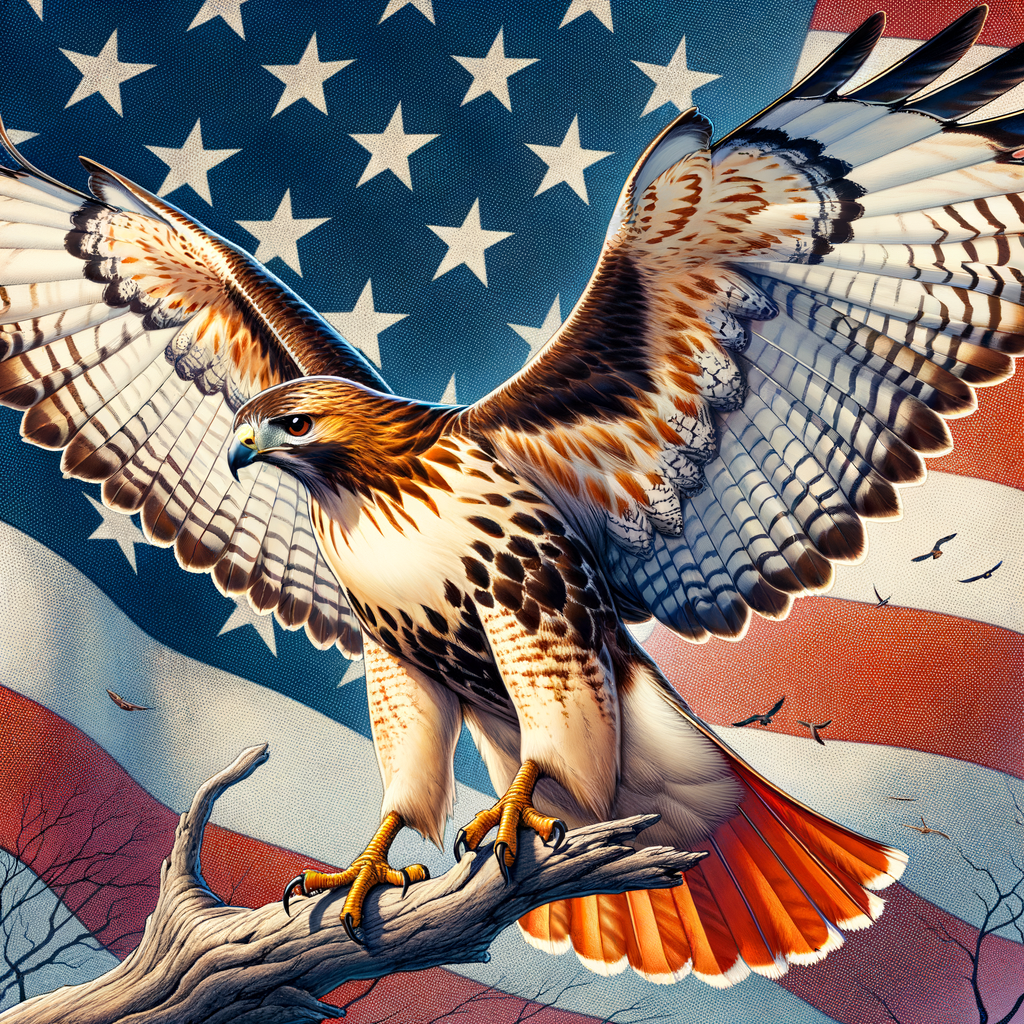Key Insights on Reintroducing Falcons to the Wild
- Falcons play an important role in maintaining the balance of ecosystems.
- Reintroduction programs help restore falcon populations in their natural habitats.
- These programs involve carefully raising and training young falcons.
- Success relies on collaboration between scientists, conservationists, and local communities.
- Monitoring released falcons ensures their survival and adaptation to the wild.
- Education and awareness about falcon conservation are crucial for ongoing support.
- Falcon reintroduction supports biodiversity and the health of the environment.
The Magical Return: Reintroducing Falcons to the Wild
Imagine, for a moment, a skilled Irish fiddler who plays a heartwarming tune. This fiddler represents the ancient art of falconry, weaving history and nature together. Just as the melody of the fiddle keeps the traditions of old alive, reintroducing falcons to the wild is like bringing back an essential note to the grand symphony of our natural world.
At Learn Falconry, we believe in the power of these magnificent birds to restore balance and beauty to their natural habitats. Falcons, once soaring freely across the skies, have faced challenges that pushed them to the brink. But fear not, dear reader! Our dedicated team is on a mission to ensure these awe-inspiring creatures reclaim their rightful place in the wild.
In this article, we’ll dive into the fascinating journey of reintroducing falcons to their natural homes. You’ll learn why this endeavor is so crucial, not just for the falcons but for the environment and future generations who deserve to witness their majesty. Stay with us as we unravel the secrets of this magical return and explore how you can be part of this extraordinary effort.
So, grab a cozy seat and let the journey beginâbecause just like the fiddler’s tune, every note in this story plays a significant part. Trust us, you won’t want to miss a single beat!
Understanding Reintroduction Efforts for Falcons in the Wild
Reintroduction efforts are all about helping falcons return to their natural habitats. Itâs a way to boost the population of these amazing birds and ensure they have a safe place to live and thrive. But what exactly goes into reintroducing falcons into the wild? Let’s explore!
Releasing Falcons: A Delicate Process
Releasing falcons back into the wild isn’t as simple as just setting them free. It involves careful planning and lots of preparation. Experts use wild reintroduction falconry techniques to make sure the birds can survive and adapt. This includes training them to hunt, finding suitable habitats, and ensuring they are healthy. For more on training techniques, you can check out our detailed guides on basic training techniques and advanced training methods.
Training for the Wild
One of the key steps in reintroduction is training the falcons to hunt and survive on their own. This involves a series of conditioning exercises that teach the birds to chase prey and recognize their natural food sources. Learn more about the specific training methods used in our articles on teaching falcons to hunt and conditioning fitness training.
Health and Nutrition
Before releasing falcons, itâs crucial to ensure they are in peak physical condition. This means maintaining a balanced diet and regular health check-ups. A healthy falcon is more likely to adapt and thrive in the wild. Our falcon health and nutrition section covers everything from basic nutrition to grooming and seasonal healthcare.
Choosing the Right Equipment
Equipping falcons with the right tools is another essential part of reintroduction efforts. From GPS trackers to falconry gloves, the correct gear ensures the birds’ safety and helps monitor their progress. Check out our comprehensive guide on falconry equipment to learn about the various tools used in wild reintroduction.
Legal Aspects
Reintroducing falcons into the wild also involves understanding and adhering to legal regulations. Different regions have specific laws regarding falconry and wildlife conservation. You can explore these regulations in our articles on legal aspects of falconry, covering everything from licensing requirements to conservation laws.
The Role of Conservation
Conservation plays a significant part in the reintroduction of falcons. It involves efforts to restore natural habitats and maintain ecosystem balance. These activities help create a sustainable environment for the falcons to live and hunt. For in-depth information, visit our page on falconry and conservation.
By understanding these important aspects and more, we can appreciate the complexities and dedication involved in reintroducing falcons to the wild and ensuring their successful adaptation. For more detailed resources, feel free to explore our extensive collection of articles on Learn Falconry.
Falcon Reintroduction Efforts in the Wild
Conservation Efforts
Conservation programs for peregrine falcons have seen significant success. For example, in Massachusetts, the reintroduction efforts began in 1972. Since then, nearly 50 territorial pairs of peregrine falcons have been established, and over 920 wild-hatched chicks have fledged. This indicates a robust return of these magnificent birds to their natural habitats.
Falconry and Reintroduction
Falconry, the ancient art of hunting with trained birds of prey, plays a vital role in reintroduction programs. In the United States, falconry remains highly popular, especially with bird species like the Red-Tailed Hawk and peregrine falcon. Experienced falconers have leveraged their skills to breed and raise young falcons, which are later released into the wild to strengthen reintroduction projects.
Regulations and Support
Falconry and its impact on wild populations are carefully regulated. For instance, in Montana, the take of young peregrine falcons for falconry is guided by the USFWS Environmental Assessment. This assessment concludes that falconry has no detrimental effect on wild raptor populations. Specifically, up to five immature birds can be taken annually without significant impact on the broader population.
Population Status
The population status of peregrine falcons in different regions demonstrates the success of reintroduction programs. In Washington, there are over 190 known breeding territories for peregrine falcons as of December 2021. Remarkably, the peregrine falcon was removed from the federal endangered species list in 1999 and from the Washington state list in 2016, signifying robust population recovery.
Genomics and Conservation
The role of genomics in falcon conservation cannot be overlooked. Genomic studies help researchers understand the genetic diversity and evolutionary factors affecting falcons. Such research aims to identify the changes brought by captive breeding and hybridization practices. These studies are crucial for ensuring the long-term health and viability of falcon populations in the wild.
| Year | Eaglet Fledged in Massachusetts | Known Peregrine Falcon Territories in Washington |
|---|---|---|
| 1972 | 0 | – |
| 2021 | 920 | 190 |
The above table highlights the incredible progress made through conservation and reintroduction efforts, showing the impact and success over the years.
Embracing the Return of Falcons
Reintroducing falcons into the wild is a monumental effort that combines conservation, education, and passion. Thanks to dedicated projects, such as those in Massachusetts and Montana, we’ve witnessed impressive success stories. With nearly 50 territorial pairs in Massachusetts and a secure population in Washington, it’s clear these majestic birds are making a comeback.
These achievements are made possible by skilled falconers who use their expertise to raise young falcons, helping reintroduction projects thrive. Regulations from the US Fish and Wildlife Service ensure these practices do not negatively impact wild populations.
As we use new technologies like genomic research, we pave the way for even more effective conservation strategies. This helps us understand the intricate relations between captive breeding and natural evolution, assuring a healthier future for falcon populations. By continuing our efforts, we safeguard these incredible birds for generations to come, proving that our actions truly make a difference in the natural world.



